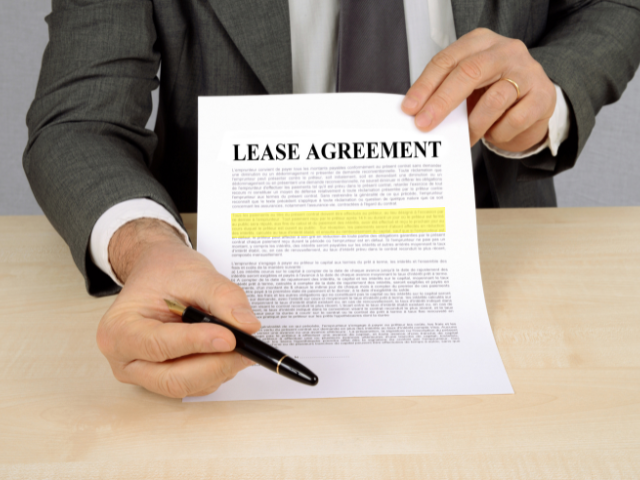A landlord's responsibility for dealing with unwanted pests stems from the implied warranty of habitability, which requires landlords to maintain safe and livable conditions for their tenants. However, the specific obligations and exceptions can vary depending on state laws, lease agreements, and the cause of the infestation. Common household pests like cockroaches, rodents, bed bugs, and ants present unique challenges in rental properties.In most states, landlords are legally responsible for ensuring their rental properties remain pest-free and habitable.
- Cockroaches can trigger allergies and asthma while contaminating food surfaces.
- Mice and rats can damage property by chewing through walls and wiring and spreading diseases.
- Bed bugs, while not disease carriers, can cause severe discomfort and psychological distress, often requiring extensive professional treatment.
- Ant infestations, though generally less dangerous, can contaminate food and indicate broader maintenance issues that landlords need to address.
Know Your Legal Duties as a Landlord
The legal framework governing pest control in rental properties centers on the implied warranty of habitability, a fundamental principle in landlord-tenant law. This warranty, recognized in nearly every state, establishes that landlords must provide and maintain residential properties that are safe and suitable for human habitation throughout the entire tenancy period. A pest-free environment is considered a basic requirement for this warranty.
 This unique situation underscores the importance of carefully reviewing lease terms in Arkansas rentals and potentially negotiating pest control responsibilities before signing.
Despite these variations in legal requirements, the general principle remains consistent across most jurisdictions: landlords are responsible for maintaining pest-free properties as part of their obligation to provide habitable living conditions. However, this responsibility may shift if there is clear evidence that the tenant's actions or negligence caused the infestation.
This unique situation underscores the importance of carefully reviewing lease terms in Arkansas rentals and potentially negotiating pest control responsibilities before signing.
Despite these variations in legal requirements, the general principle remains consistent across most jurisdictions: landlords are responsible for maintaining pest-free properties as part of their obligation to provide habitable living conditions. However, this responsibility may shift if there is clear evidence that the tenant's actions or negligence caused the infestation.
When Tenants May Be Responsible
While landlords generally bear primary responsibility for pest control, there are specific circumstances where tenants may become financially responsible for pest treatment. These situations typically arise when the infestation can be directly linked to tenant behavior or negligence. When Tenants Are Responsible: Tenants may be liable for pest control costs if negligence, such as poor housekeeping or failure to report maintenance issues,contributes to infestations. This includes situations where tenants' poor housekeeping practices directly contribute to pest problems, such as:
When Tenants Are Responsible: Tenants may be liable for pest control costs if negligence, such as poor housekeeping or failure to report maintenance issues,contributes to infestations. This includes situations where tenants' poor housekeeping practices directly contribute to pest problems, such as:
- Consistently failing to remove garbage regularly
- Leaving food uncovered or improperly stored
- Not cleaning up spills or food debris
- Keeping rotting food in the unit
- Failing to report water leaks or moisture issues that attract pests
- The condition of the property before the tenant's occupancy
- Evidence that the infestation resulted from tenant behavior
- Records of previous pest treatments and their effectiveness
- Photographic or video evidence of conditions leading to the infestation
- Documentation of any complaints or notifications about cleanliness issues
- Reports from pest control professionals identifying the cause of the infestation
What Constitutes an Infestation?
An infestation occurs when pests are present in numbers significant enough to affect the health, safety, or normal use of a property or when there is evidence of sustained pest activity despite basic control measures. While no universal numerical threshold defines an infestation, pest control professionals typically consider factors such as the type of pest, visible evidence, reproduction rates, and property damage. For example, seeing a single cockroach might indicate an infestation because cockroaches are typically active at night, and spotting one during daylight often suggests that many more are hidden. Similarly, finding multiple mice droppings in different areas indicates an active rodent problem. Even a small number of bed bugs can qualify as an infestation due to their rapid reproduction and spread. The presence of pest eggs, nests, or property damage also helps determine whether the pest presence constitutes an actual infestation requiring professional intervention versus an occasional pest sighting that might be resolved through simpler measures.Specific Pest Situations
Different types of pests present unique challenges in rental properties and may be subject to varying regulations and responsibilities. Understanding these distinctions is crucial for both landlords and tenants.Bed Bugs
Bed bug infestations have become increasingly common in rental properties, leading to specific legislation in 21 states, including Florida, New York, and Maine. These laws explicitly state that landlords are responsible for bed bug extermination, regardless of the source of the infestation. This strict approach stems from bed bugs' unique characteristics:- They spread rapidly through no fault of any party
- They can travel between units in multi-family buildings
- Professional treatment is almost always required
- The source of infestation is often impossible to determine
- Early intervention is crucial to prevent building-wide problems
Rodents
Mice and rat infestations require immediate attention due to their potential to cause serious damage and health hazards. Landlords are typically responsible for rodent control because:- They can damage essential building components like wiring and insulation
- Their presence often indicates structural deficiencies that landlords must address
- They pose significant health risks through droppings and contamination
- They can multiply rapidly if not addressed quickly
- Professional intervention is usually necessary for effective elimination
Cockroaches
Cockroach control falls squarely under the landlord's responsibilities to maintain a habitable dwelling. Landlords must address cockroach infestations promptly because:- They pose significant health risks, particularly for children and individuals with asthma
- They indicate potential structural issues like water leaks or unsealed entry points
- Their presence may violate local health codes
Who Pays?
Understanding who pays for pest control services in rental properties is crucial for both landlords and tenants. While the general framework places most costs on landlords, there are specific circumstances where tenants may bear financial responsibility.Landlord's Financial Obligations
Landlords are typically responsible for the costs associated with maintaining a pest-free property, including:- Regular preventive pest control treatments
- Professional extermination services when infestations occur
- Repairs to prevent pest entry (sealing holes, fixing gaps)
- Treatment of common areas in multi-unit buildings
- Emergency pest control responses
- Quick response to pest problems
- Maintenance of habitable conditions
- Compliance with legal obligations
- Prevention of further property damage
When Tenants May Bear Costs
There are specific situations where tenants may become financially responsible for pest control:- Documented Negligence: Tenants may be required to pay when there's clear evidence that their actions caused the infestation:
- Failure to maintain basic cleanliness
- Improper food storage
- Not reporting water leaks promptly
- Bringing infested furniture into the property
- Lease Agreement Terms: The rental agreement may specify tenant responsibility for pest control costs if
- The infestation occurs after move-in
- The tenant's actions caused the problem
- Regular pest control is listed as a tenant responsibility
- Evidence Requirements: For landlords to pass pest control costs to tenants, they must typically provide
- Documentation of the property's pest-free condition at move-in
- Photographic evidence of tenant negligence
- Professional pest control reports identifying the cause
- Records of previous treatments and inspections
- Written notifications to tenants about problematic conditions
Best Practices
Successful pest control in rental properties relies heavily on prevention and proper documentation. Through proactive measures and clear communication, landlords and tenants both play important roles in maintaining pest-free environments.Prevention Strategies
Regular Inspections - Property owners should conduct systematic inspections:- Quarterly checks of all units
- Monthly inspections of common areas
- Immediate inspection following tenant complaints
- Seasonal examinations for specific pests
- Pre and post-tenant inspections
- Checking for water leaks and moisture issues
- Inspecting HVAC and plumbing systems
- Monitoring garbage disposal areas
- Examining landscaping for pest-harboring
- Testing drainage systems
- Sealing gaps around utility entries
- Repairing cracks in foundations
- Installing or maintaining door sweeps
- Fixing holes in screens
- Addressing gaps around windows
- Regular cleaning of common areas
- Proper garbage management
- Landscape maintenance
- Prompt repairs of structural issues
- Adequate ventilation maintenance
Documentation Requirements:
Lease Agreement Specifications - Rental agreements should clearly outline- Pest control responsibilities
- Reporting procedures
- Prevention requirements
- Cost allocation terms
- Treatment access protocols
- Initial pest sightings
- Tenant complaints
- Inspection findings
- Treatment requests
- Follow-up actions
- Dates of treatments
- Types of treatments applied
- Areas treated
- Professional service providers used
- Costs and receipts
- Follow-up inspections
- Reporting pest issues
- Notifying tenants of treatments
- Scheduling inspections
- Sharing prevention tips
- Documenting all communications
Legal Remedies
When pest infestations occur in rental properties, both tenants and landlords have specific legal rights and obligations. Understanding these can help both parties resolve pest issues effectively while protecting their legal interests.Tenant Rights
Rent Withholding - Tenants may have the right to withhold rent if:- The pest infestation makes the unit uninhabitable
- The landlord fails to address the problem within the required timeframes
- Proper notice has been given to the landlord
- State and local laws permit rent withholding
- The withheld rent is placed in an escrow account
- Severe pest infestations render the unit uninhabitable
- The landlord fails to respond to written notices
- The problem persists despite multiple treatment attempts
- Health and safety are significantly compromised
- Local health codes are violated
- Filing complaints with local housing authorities
- Seeking court-ordered repairs
- Suing for damages or rent reimbursement
- Requesting injunctive relief
- Filing claims in small claims court
Landlord Obligations
Response Timeframes - Here in Colorado, Landlords must adhere to specific timelines:- Acknowledge pest complaints within 24-72 hours
- Begin treatment within specified state timeframes (typically 7-30 days)
- Address emergencies immediately
- Follow up on treatments as recommended by professionals
- Complete mitigation within reasonable time frame
Treatment Requirements
Landlords must ensure:- Professional pest control services when required
- EPA-approved treatment methods
- Safe application of pesticides
- Proper notification of treatments
- Follow-up inspections and treatments as needed
- All pest-related complaints and responses
- Treatment dates and methods used
- Professional pest control reports
- Communication with tenants
- Receipts and invoices for services
- Follow-up inspections and results

